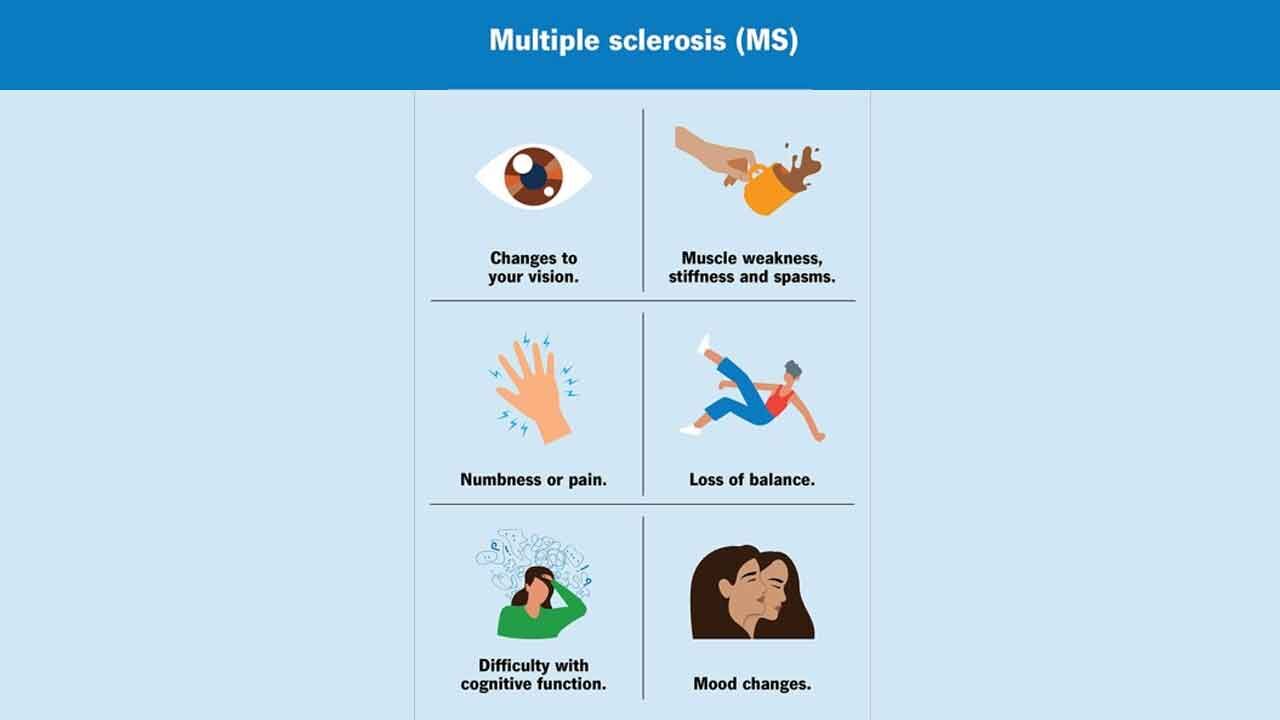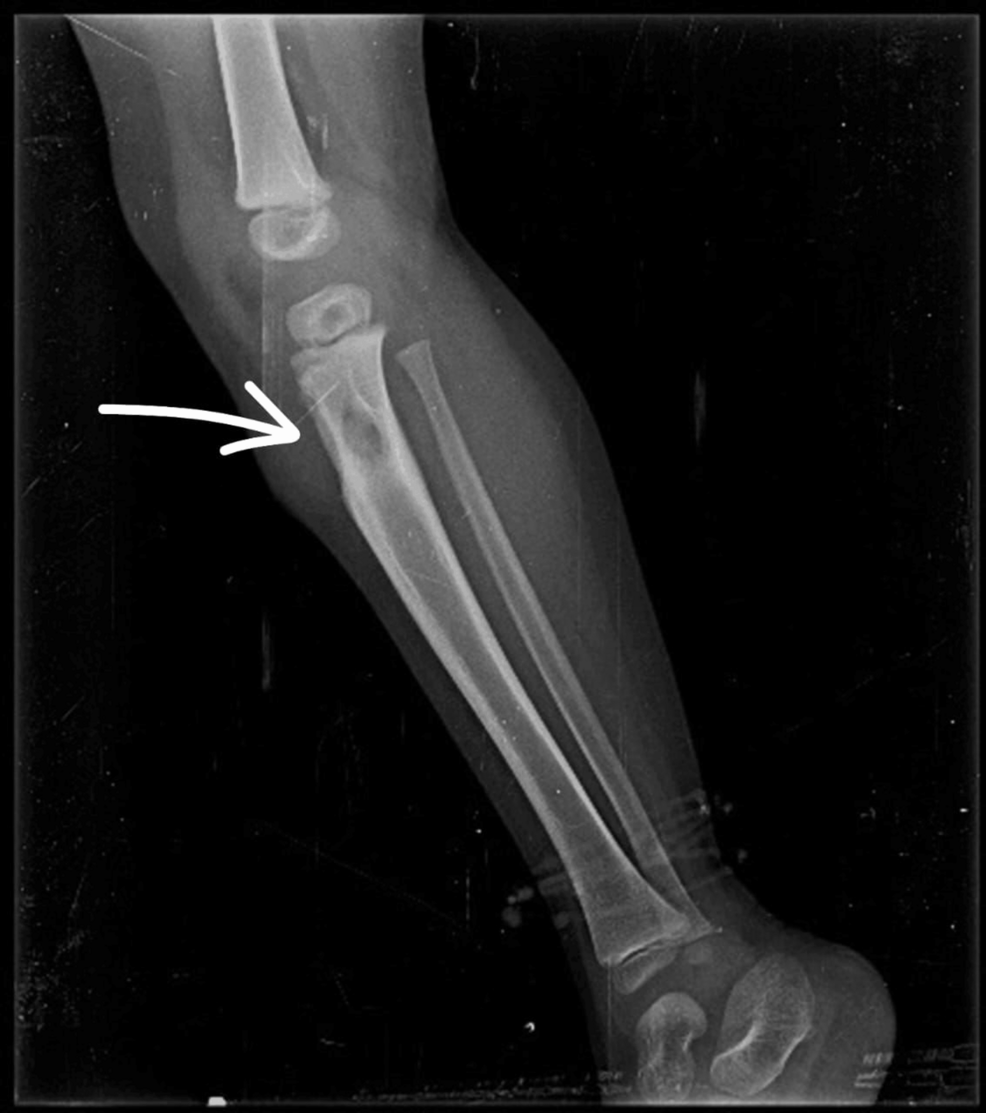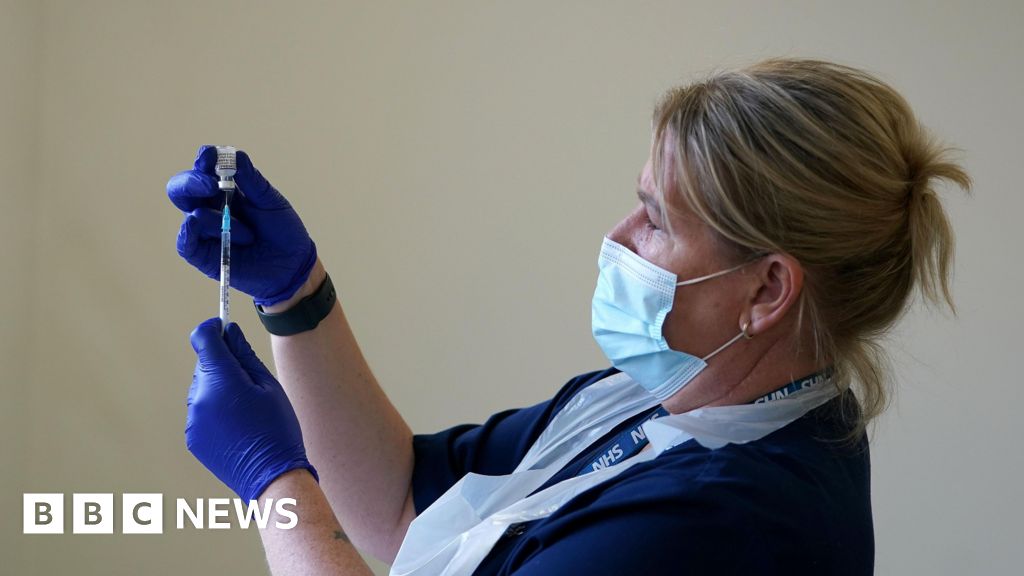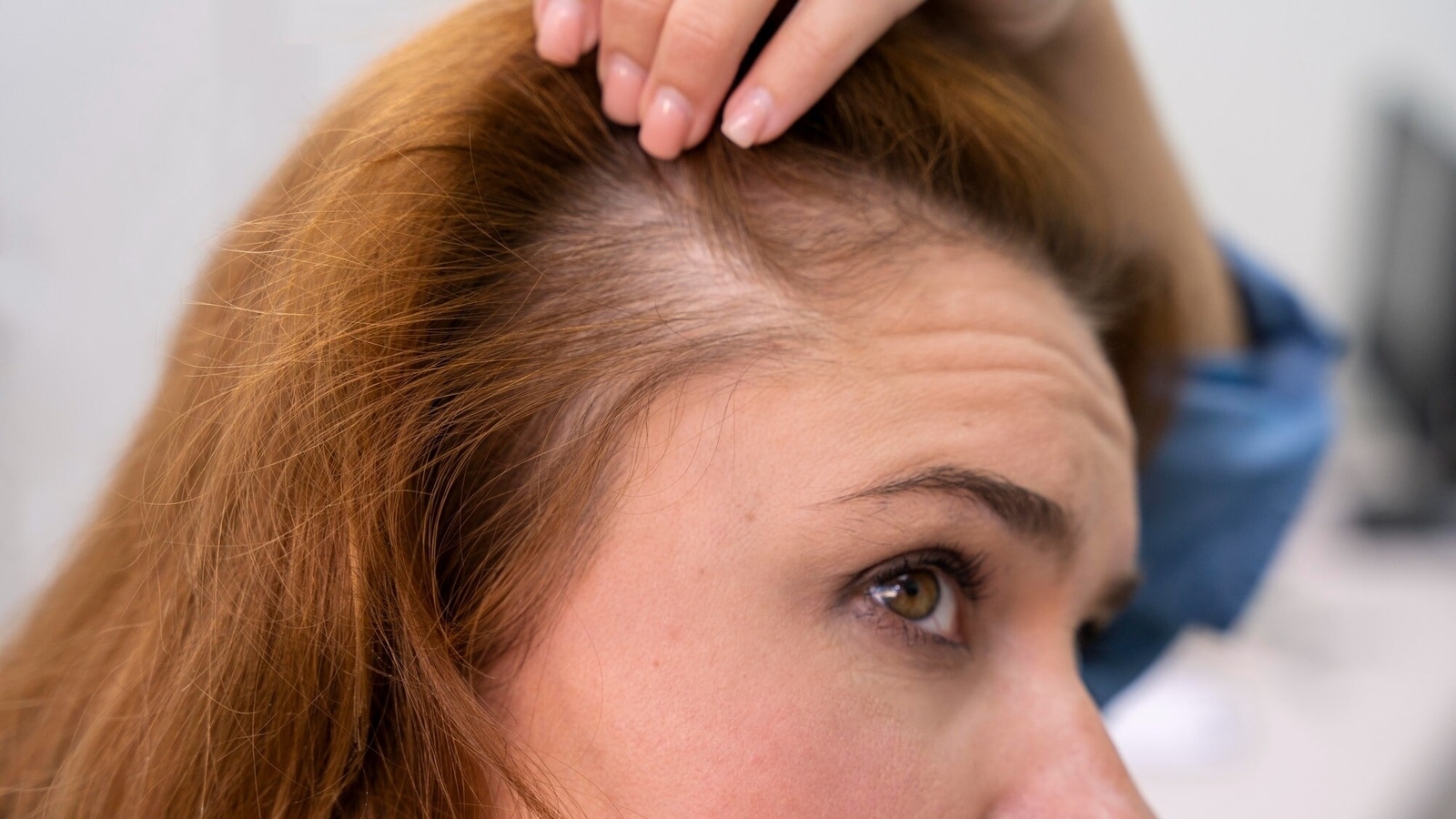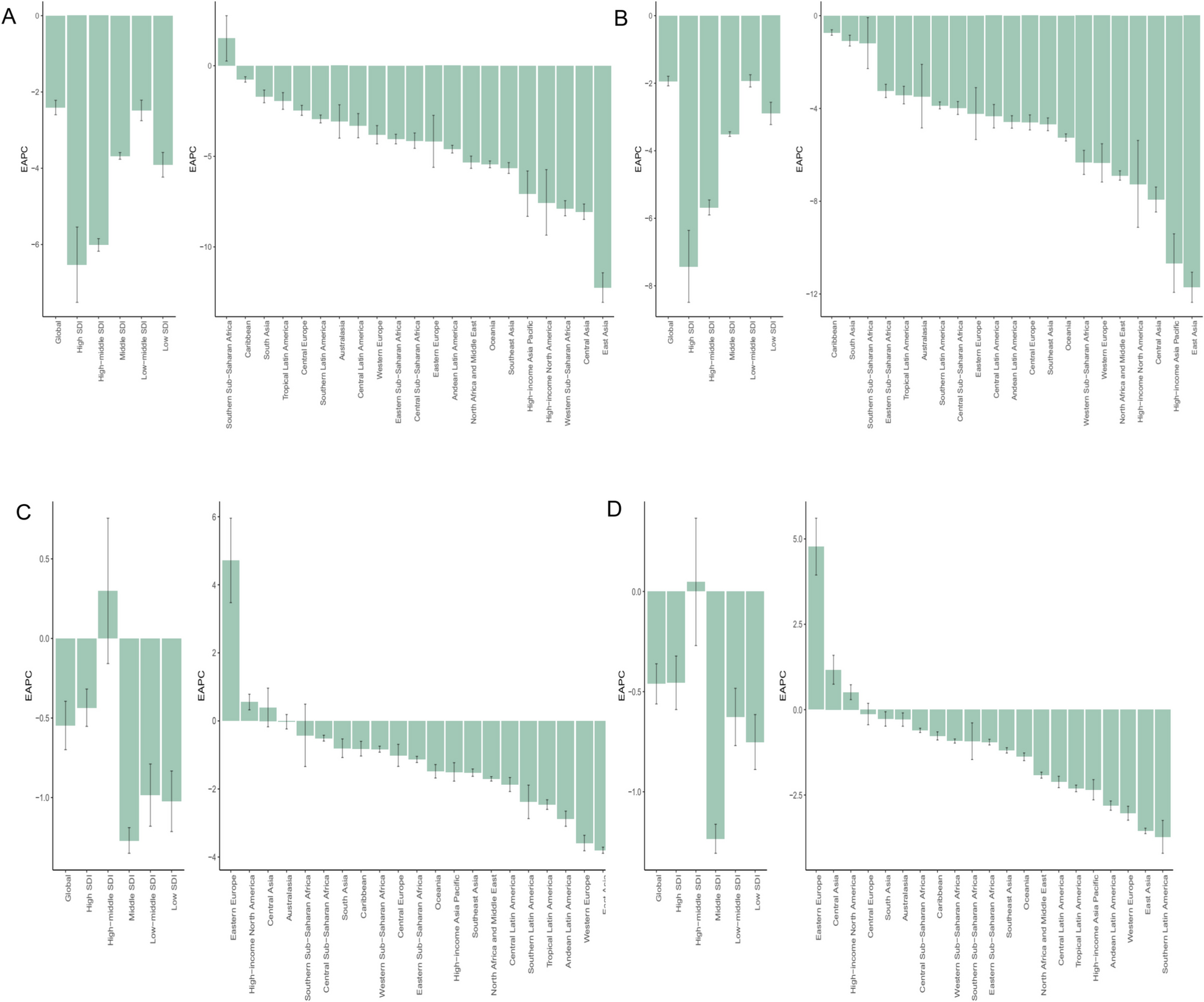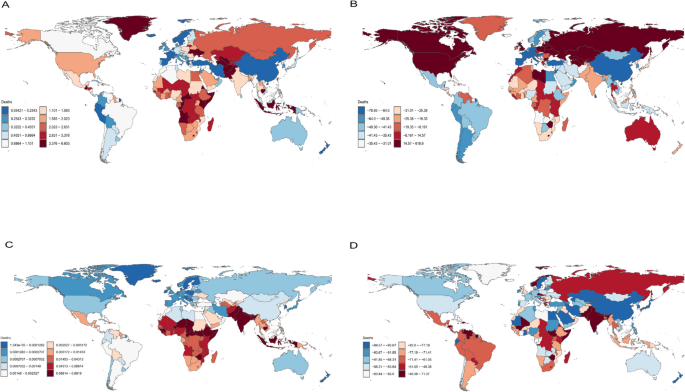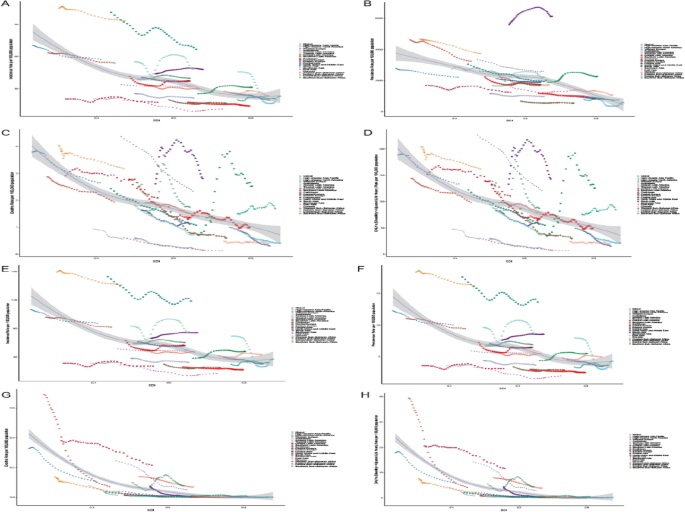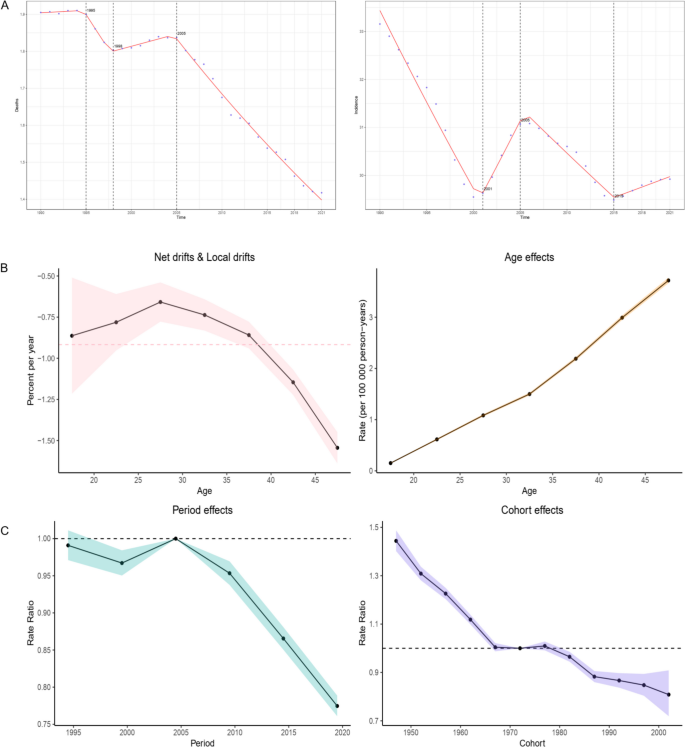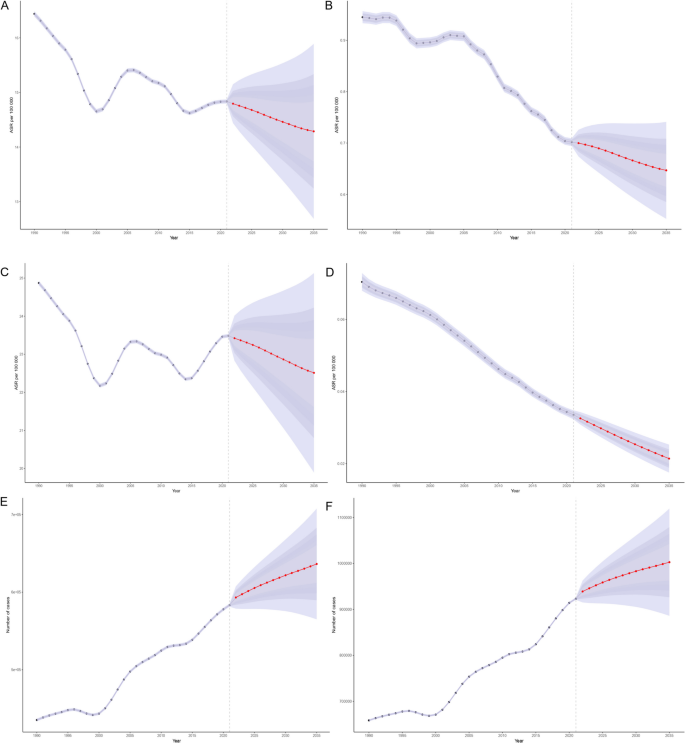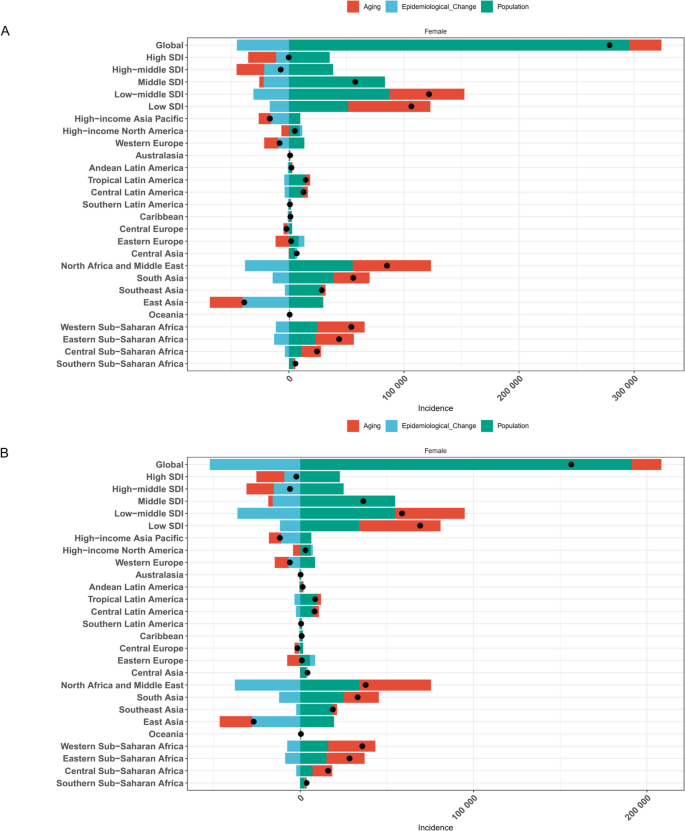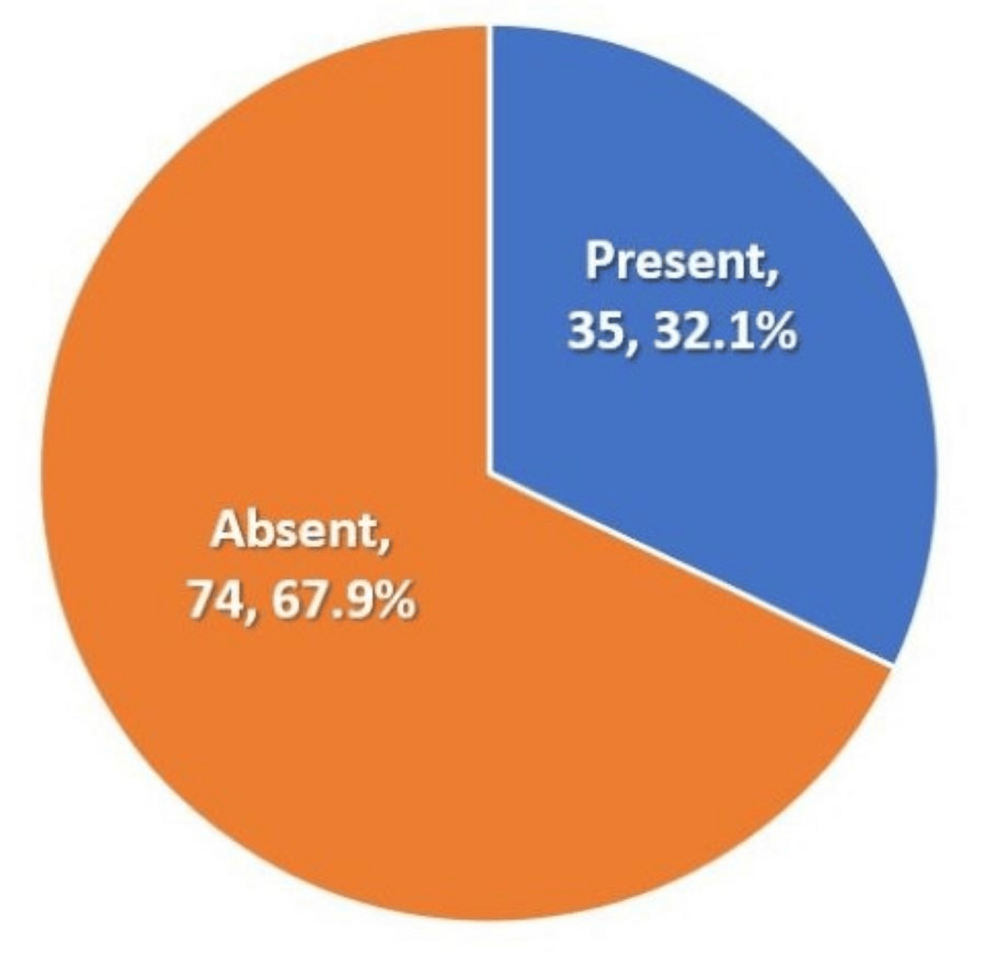Introduction
Patients experiencing burn injuries endure acute pain resulting not only from the initial trauma but also from subsequent procedures such as debridement and grafting.1 The progression from acute to chronic pain is frequently attributed to suboptimal analgesic efficacy, adverse psychological conditions, and inadequate infection control.2,3 The treatment of chronic pain imposes a considerable financial burden and constitutes a pressing public health concern.4,5 Opioids continue to represent a primary and potent class of analgesics. However, their prolonged or repeated use—including agents such as morphine, [D-Ala2, NMe-Phe4, Gly5-ol]-enkephalin (DAMGO), and fentanyl—has been associated with diminished analgesic effectiveness, thereby significantly limiting their broader clinical utilization.6,7 The mu-opioid receptor (MOR), classified within the G protein-coupled receptor superfamily, is the principal mediator through which opioids exert their analgesic properties.8 Evidence suggests that MOR desensitization constitutes a core mechanism responsible for both reduced analgesic efficacy and the onset of opioid tolerance.9,10 Endocytic trafficking plays a pivotal role in the desensitization of MOR. Following activation, MORs are internalized from the plasma membrane into the cytoplasm, where they are either inactivated via lysosomal degradation or recycled back to the membrane in a reactivated state to resume functionality.11 Thus, elucidating the mechanisms of MOR desensitization is essential for the development of effective therapeutic interventions aimed at alleviating chronic pain.
The rostral ventromedial medulla (RVM) serves as a neuroanatomical nexus within the brain’s endogenous analgesic circuitry, mediating descending projections from the periaqueductal gray (PAG) to spinal cord laminae I–V. As the final integrative center of supraspinal nociceptive control networks, the RVM coordinates the bidirectional modulation of spinal nociceptive transmission.12 This dual regulatory capacity has been attributed to the activation of functionally distinct ON and OFF neurons—pronociceptive and antinociceptive, respectively—which differentially influence pain signaling.13 Prior investigations have identified the G protein-coupled estrogen receptor (GPER) as a key modulator of cellular activity in the RVM, implicated in the facilitation of nociceptive signal propagation.14 GPER, recognized for its involvement in the rapid, non-genomic responses to estrogen, has been characterized as a “non-classical” estrogen receptor localized on the cellular membrane.15 Experimental data have revealed that mechanical and thermal hyperalgesia induced by estrogen is elicited by selective GPER agonists and effectively attenuated by GPER knockdown.13,16 Moreover, GPER inhibition has been demonstrated to significantly augment opioid analgesia while postponing the emergence of morphine tolerance.13 Findings further suggest that GPER activity within the RVM enhances MOR phosphorylation, thereby maintaining nociceptive hypersensitivity.17 Nevertheless, the precise molecular mechanisms that govern the interaction between GPER and MOR remain inadequately explored, particularly in contexts of chronic pain arising from unknown etiologies.
Several studies have examined the mechanisms responsible for MOR desensitization triggered by either heterologous or homologous opioids, attributing this process to receptor internalization and phosphorylation.18,19 Recent evidence has indicated that MOR phosphorylation is facilitated by GPER activation via the activation and subsequent translocation of PKC in human neuroblastoma SH-SY5Y cells.20 Additionally, G-protein-coupled receptor kinase (GRK) has been reported to increase its affinity for β-arrestin-2, thereby initiating receptor endocytosis.21,22 In light of these observations, the present study was designed to further elucidate the molecular mechanisms underlying MOR desensitization in the context of chronic pain.
Despite the widespread incidence of burn injury-associated pain, its underlying mechanisms remain insufficiently characterized, and preclinical investigations have been relatively limited. In the present study, the hypothesis that GPER contributes to chronic postoperative pain by modulating PKC and promoting subsequent PKC-dependent MOR phosphorylation was evaluated. A burn-induced operative pain model was initially established. Thereafter, GPER expression in the RVM was examined using immunofluorescence staining and Western blot (WB) analysis. The co-localization of GPER-immunoreactive neurons with specific PKC isoforms and MOR was further assessed via immunofluorescence staining. In functional assays, GPER activation by G1, inhibition by G15, and PKC silencing using Staurosporine (STS) were utilized to determine their respective impacts on MOR phosphorylation and internalization, antinociceptive efficacy, and the transition to chronic pain. These results yield novel perspectives on postoperative pain regulation and establish a foundational experimental framework for developing clinically applicable approaches to chronic pain management.
Methodologies and Material
Animals
The 8–10-week-old adult male C57BL/6J mice (Sipeifu Biotechnology Co., Ltd)., weighing between 20 and 25 g, were utilized in the experiments. The animals were maintained under a controlled 12-hour light/dark cycle at a constant temperature of 22–25 °C. All rodents were acclimated for 7 days prior to experimentation, with unrestricted access to autoclaved chow and UV-treated water. All experimental protocols involving mice received formal approval from the Jiangnan University Institutional Animal Care and Use Committee (IACUC, No. 20151216–0229) and were executed in full accordance with the approved Animal Care and Use Protocols. In addition, all procedures related to animal handling were authorized by the Institutional Animal Ethical and Welfare Committee of Jiangnan University (Wuxi, China).
Burn Injury-Inducing Pain Model
Under anesthesia induced by phenobarbital (75 mg/kg), the right hind paw of each mouse, disinfected with iodophor, was exposed to a 65 °C metal plate for 10s. For the sham procedure performed on naïve mice, the right hind paws were placed on a metal plate at room temperature for an identical duration. The resulting wound was treated with antibiotic ointment for seven consecutive days. A homoeothermic platform was employed to maintain body temperature at 37 °C until spontaneous recovery of consciousness occurred.
Behavioral Test
Nociceptive paw withdrawal responses to both thermal and mechanical stimulation were evaluated. Prior to each test, mice were acclimated to the testing environment for 30 min. To assess burn injury-induced mechanical allodynia, paw withdrawal thresholds (PWT) were measured using an electronic von Frey test (IITC Life Science, NC12775). The PWT was determined using the “up-and-down” method. A von Frey filament was applied to the right posterior paw and held near the injury site for 6–8 s. This stimulation was repeated three times at 5-minute intervals. To evaluate thermal pain sensitivity, mice were placed on a hot plate maintained at 55 °C. Paw withdrawal latency (PWL) in response to foot licking, foot retraction, or jumping was recorded as the thermal nociceptive threshold. Each trial was conducted three times with 2-minute intervals between tests. To avoid tissue damage, mice were removed from the thermal stimulus apparatus after 25s. Inflammation severity was assessed by measuring hind paw thickness using electronic vernier calipers.
Conduct Cannula Implantation for Microinjection
Mice were anesthetized with phenobarbital (75 mg/kg) and immobilized in a stereotactic frame (SR-6 N, Japan), with the cephalic region maintained in the anatomical neutral plane. The surgical field, extending from the posterior orbital ridges to the occipital protuberances, was aseptically prepared using sterile electric clippers. Sequential skin disinfection was carried out by three consecutive applications of 10% povidone-iodine solution.
Following exposure of the skull to identify the bregma, a small opening was carefully drilled to allow insertion of the implanted cannula into the RVM, in accordance with predetermined coordinates: 5.88 mm posterior to bregma and precisely aligned with the midline (0 mm). Additionally, two small holes that did not penetrate the skull were made adjacent to the initial drilling site. The depth of the implanted portion of the injection cannula was adjusted to 5.7 mm. The cannula was inserted vertically into the mouse brain through the prepared opening to minimize displacement and motion. Screws were carefully turned into the auxiliary holes on both sides. The microinjection cannula was then securely affixed using screws and dental cement. Surgical sites were disinfected with a povidone-iodine solution. Mice were subsequently placed on a thermostatic platform to facilitate awakening and recovery. The health status of each mouse was monitored closely.
Experimental Grouping and Microinjection
The mice were classified into distinct cohorts—naïve, pain recovery, and pain persisting—based on PWT and PWL measurements obtained between days 14 and 16 following burn injury, in accordance with a previous report.17 Under identical experimental conditions, a subset of mice subjected to burn injury developed a pain persisting state, characterized by nociceptive allodynia. Compared with the pain recovery cohort (n = 10), mice in the pain persisting cohort (n = 10) exhibited a persistently decreased pain threshold from days 14 to 20 post-burn injury.
The implantation cannula was employed for microinjection prior to the burn injury. Drug preparation and administration were conducted in accordance with previously published protocols.23 The compounds included G1 (GPER agonist, 0.2 μg/μL, 1 μL), G15 (GPER antagonist, 1.8 μg/μL, 1 μL), and STS (PKC antagonist, 2.3 μg/μL, 1 μL), each dissolved in dimethyl sulfoxide (DMSO) and delivered at a rate of 40 nl/min via the implantation cannula once daily from days 16 to 17. To investigate the role of GPER in the RVM during chronic pain, G1 was microinjected into the RVM of mice in the pain recovery cohort (n = 10), while G15 was administered to those in the pain persisting group (n = 10). Additionally, STS was microinjected into pain recovery mice (n = 10); co-administration of STS and G1 was performed in another pain recovery group (n = 10); and STS was also administered to pain persisting mice (n = 10). All procedures and treatment groupings are summarized in Table 1.
|
Table 1 Treatment in 10 Cohorts in This Study
|
Sample Preparation
After behavioral testing on day 20, the animals were deeply anesthetized with sodium pentobarbital (75 mg/kg) and subsequently euthanized. Thereafter, RVM tissues were extracted from the brain. Samples designated for WB analysis were rapidly frozen in liquid nitrogen and stored at −80 °C. For immunofluorescence imaging, tissue specimens underwent transcardial perfusion through the ascending aorta with saline, followed by fixation using 40 g/L paraformaldehyde dissolved in pre-chilled sodium phosphate dibasic buffer (4 °C, pH 7.4).
WB Analysis
Fresh RVM samples were procured and immersed in RIPA buffer containing protease and phosphatase inhibitors to enable total protein extraction. Membrane proteins were isolated using a membrane protein extraction kit (Proteintech, USA) in accordance with the manufacturer’s protocol. Protein denaturation was performed by adding loading buffer (Proteintech, USA), followed by boiling at 100 °C for 10 min. Subsequently, protein samples were separated via 10% SDS polyacrylamide gel electrophoresis and electrophoretically transferred onto pre-activated 0.45 μm PVDF membranes (Millipore, USA). After blocking with either 5% BSA or 5% nonfat dried milk for 2 h, the membranes were incubated overnight with specific primary antibodies against GPER (1:1000, Novus), MOR (1:1000, Santa Cruz Biotechnology), p-MOR (1:1000, Signalway Antibody), PKC α (1:1000, Abcam), PKC ε (1:1000, Proteintech), p-PKC (1:1000, Abcam), GRK2 (1:2000, Immunoway), GRK3 (1:2000, Immunoway), and β-actin (1:1000, Cell Signaling Technology). Subsequently, HRP-conjugated anti-rabbit or anti-mouse secondary antibodies (Cell Signaling Technology) were applied. Following secondary antibody incubation, immunoreactive bands were visualized using the TANON chemiluminescence bioimaging platform (2500B, TANON Science, China). Band intensity measurements were quantified using ImageJ software (NIH), with normalization to β-actin as the loading control.
Immunofluorescence Staining
The mice were deeply anesthetized with phenobarbital sodium (75 mg/kg) and subsequently subjected to transcardial perfusion with PBS, followed by paraformaldehyde. The brain was then extracted, post-fixed in the same fixative, and immersed in 30% sucrose for cryoprotection. RVM tissues were sectioned into 16 μm-thick slices and blocked for 1 h. Each tissue section was sequentially incubated with a primary antibody (GPER, 1:200, Proteintech; MOR, 1:200, Santa Cruz Biotechnology; PKC α, 1:200, Proteintech; PKC ε, 1:200, Proteintech), followed by a secondary antibody. Fluorescence images were subsequently acquired using a Zeiss Axio Imager 2 microscope.
Statistical Analysis
Data processing and statistical analyses were performed using GraphPad Prism 9.5 (GraphPad Software). Experimental data are expressed as mean ± SEM. Behavioral test results were analyzed via two-way repeated measures ANOVA, followed by Bonferroni post hoc tests. For comparisons involving multiple groups, one-way ANOVA was employed with the Tukey post hoc test. For two-group comparisons, a two-tailed unpaired Student’s t-test was utilized. Statistical significance was defined as a p-value less than 0.05.
Results
Increased Sensitivity of Response to Non-Injurious Stimulation in the Mice of Pain Persisting Cohorts
With the growing recognition of the importance of burn wound care, the management of burn-associated pain has emerged as a central component of treatment strategies.24 Therapeutic intervention for chronic pain remains particularly challenging due to its intensity and prolonged duration, further complicated by the development of tolerance, dose escalation, and the considerable risk of opioid dependence.25,26 To investigate the mechanisms underlying persistent postoperative pain, a burn-induced pain model was employed to simulate the transition from acute to chronic pain states. Prior to the induction of the burn injury model, assessments of thermal and mechanical pain thresholds in mice, measured using von Frey and hot plate tests, revealed no statistically significant differences among the three experimental cohorts. However, a pronounced reduction in pain threshold was observed one-day following burn injury when compared with naïve mice (Naïve vs Pain persisting: PWT: P < 0.0001, PWL: P < 0.05; Naïve vs Pain recovery: PWT: P < 0.0001, PWL: P < 0.05; Figure 1A and B). Between days 3 and 10 post-injury, the mice exhibited persistently low pain thresholds in response to non-noxious mechanical and thermal stimuli. A progressive increase in pain threshold was noted in the majority of mice beginning on day 10, with complete restoration to baseline levels occurring between days 14 and 18 post-injury. These mice ultimately demonstrated no significant difference from naïve controls and were classified as the pain recovery cohort. In contrast, a subset of mice transitioned into a persistent pain state, as evidenced by sustained reductions in both PWT and PWL through day 18 following burn injury, compared with the pain recovery group. These mice, which exhibited prolonged hyperalgesia, were designated as the pain persisting cohort. Meanwhile, naïve mice subjected to repeated mechanical and thermal stimuli over the 18-day period displayed no significant changes in pain threshold (P > 0.05, Figure 1A and B).
 |
Figure 1 Differences between pain persisting and pain recovery cohorts induced by burn trauma. (A and B) The PWT and PWL of mice were assessed at baseline and on days 1, 3, 5, 7, 10, 14, 16, and 18 post-burn injury (n = 10; *p < 0.05, **p < 0.01, ****p < 0.0001, comparison between naïve and pain persisting cohort; #p < 0.05, ##p < 0.01, ####p < 0.0001, comparison between pain persisting and pain recovery cohort). (C) Comparative trends in contralateral hind paw thickness between pain persisting, naïve, and pain recovery cohort (n = 6). (D) Images depicting the right hind paw plantar surface at various time points post-burn injury (n = 6). (E) Representative HE-stained images illustrating the skin surrounding the burn wound in cohorts on day 18 post-burn injury (n = 6).
|
The overall healing trajectory of the right paw wound in both the pain recovery and pain persisting cohorts followed a largely comparable pattern across various time points (Figure 1D). Moreover, swelling in the right hind paw exhibited a similar trend between the two cohorts, with paw thickness significantly increasing on day 3 and subsequently returning to baseline levels consistent with those of naïve mice by day 16 (P > 0.05, Figure 1C). In addition, identical physiological skin architecture, as visualized by hematoxylin-eosin staining, was observed in both the pain recovery and pain persisting cohorts (Figure 1E).
Phosphorylation and Internalization of MOR Were Elevated in Pain Persisting Mice
Immunoblotting analysis revealed a significant downregulation of MOR expression in both the pain recovery and pain persisting cohorts compared with naïve mice (Pain recovery vs Naïve, P < 0.01; Pain persisting vs Naïve, P < 0.001; Figure 2A and B). Subsequently, immunofluorescence staining was employed to evaluate MOR-positive neuronal activation in the RVM across distinct pain states (Figure 2D). Consistently, the naïve cohort exhibited a substantially higher number of MOR-expressing neurons than both the pain recovery and pain persisting groups (Pain recovery vs Naïve, P < 0.001; Pain persisting vs Naïve, P < 0.0001; Figure 2E). In alignment with previous findings on MOR phosphorylation in chronic pain,17 an elevated level of MOR phosphorylation was detected in the pain persisting cohort (Pain persisting vs Naïve, P < 0.01; Pain persisting vs Pain recovery, P < 0.0001; Figure 2C), indicating the involvement of MOR phosphorylation in the transition from acute to chronic pain. Moreover, MOR localization at the plasma membrane was significantly increased in pain persisting mice compared with both naïve and pain recovery cohorts (P < 0.05; Figure 2F–G), suggesting that impaired MOR internalization may contribute to the persistence of chronic pain.
 |
Figure 2 Alterations in MOR protein expression, phosphorylation, neuronal positivity, and membrane translocation across heterogeneous pain manifestations. (A) Representative WB bands illustrating the expression levels of MOR and p-MOR of mice subjected to different pain manifestations (MW: p-MOR, 75 kDa; MOR, 55 kDa; β-Actin, 42 kDa). (B, C) Quantitative analysis of p-MOR and MOR expression in the RVM of mice experiencing distinct pain phenotypes (Naïve, Pain persisting, and Pain recovery cohort, n = 6). (D) Representative immunofluorescence images depicting the distribution of MOR+ neurons within the RVM. All scale bars, 100 μm. (E) Statistical analysis of MOR+ neuron counts in the RVM across heterogeneous pain phenotypes (n = 6). (F and G) Membrane translocation of MOR protein in mice subjected to heterogeneous pain conditions (n = 6). **p < 0.01, ***p < 0.001, ****p < 0.0001.
Abbreviation: ns, no statistical difference.
|
GPER Expression and PKC Expression Were Enhanced During Persisting Pain Induced by Burn Injury
The RVM plays a central role in descending pain modulation within the CNS and has been closely associated with the onset and progression of hyperalgesia.27 As previously reported,17 GPER in the RVM acts as a critical regulator in the development of chronic pain. To further examine its expression across experimental cohorts, immunoblotting was performed (Figure 3A). The results demonstrated that GPER activation was significantly increased in pain persisting mice on day 18 following burn injury, compared with both the naïve and pain recovery cohorts (Pain persisting vs Naïve, P < 0.001; Pain persisting vs Pain recovery, P < 0.05; Figure 3B).
 |
Figure 3 Alterations in GPER, PKC, PKC membrane translocation, and GRK protein expression across different pain phenotypes. (A) Representative WB bands illustrating the expression levels of GPER, PKCα, PKCε, p-PKC, GRK2, and GRK3 in the RVM of mice subjected to different pain conditions (MW: GPER, 42 kDa; PKCα, PKCε, and p-PKC, 78 kDa; GRK2 and GRK3, 80 kDa; β-Actin, 42 kDa). (B–G) Quantitative analysis of GPER, PKCα, PKCε, p-PKC, GRK2, and GRK3 expression in the RVM across different nociceptive profiles (n = 6). (H) Representative WB bands demonstrating the expression of PKCα and PKCε in the membrane compartment across different nociceptive profiles. (I-J) Quantitative analysis of PKCα and PKCε expression in the membrane compartment (n = 6). *p < 0.05, **p < 0.01, ***p < 0.001, ****p < 0.0001.
Abbreviation: ns, no statistical difference.
|
Although numerous studies have demonstrated that PKC plays an essential role in both inflammatory and neuropathic pain within the spinal cord,28,29 substantially less is known about its function in the brain with respect to pain processing and analgesia. In line with previous findings on elevated PKC expression in the spinal cord of morphine-tolerant rats,30 a significant upregulation of PKC α and PKC ε protein expression in the RVM was detected in pain persisting mice subjected to burn injury (PKC α: P < 0.0001; PKC ε: P < 0.0001; Figure 3C and D). Moreover, phosphorylation of PKC (p-PKC) was also found to be elevated in the pain persisting cohort (P < 0.001; Figure 3E), indicating increased PKC activation under chronic pain conditions. Subfractionation experiments further revealed a pronounced elevation in membrane-associated PKC within the RVM of pain persisting mice, as compared to naïve and pain recovery cohorts (Pain persisting vs Naïve: PKC α: P < 0.001, PKC ε: P < 0.05; Pain persisting vs Pain recovery: PKC α: P < 0.05, PKC ε: P < 0.01; Figure 3H–J), suggesting a translocation of PKC α and PKC ε from the cytosolic compartment to the membrane during the development of chronic pain. Although GRK has been implicated in MOR phosphorylation and nociceptive allodynia in previous studies,31 no significant differences in GRK2 or GRK3 expression were observed in the pain persisting cohort compared to either the naïve or pain recovery cohorts (P > 0.05; Figure 3F and G).
GPER-Positive Neurons Were Immunoreactive for MOR Neurons and PKC Neurons
The activation of GPER- and MOR-expressing neurons in the RVM under conditions of persistent pain was evaluated through double immunofluorescence staining (Figure 4A). Partial colocalization of GPER with MOR in the RVM of pain persisting mice was observed (Figure 4A). Moreover, the number of GPER+ neurons in the pain persisting cohort was significantly higher than in the other cohorts (Pain persisting vs Naïve, P < 0.0001; Pain persisting vs Pain recovery, P < 0.01; Figure 4C). Additionally, colocalization of GPER with PKC α and PKC ε was identified in the RVM of the pain persisting cohort, suggesting that GPER may mediate PKC signaling in the RVM during chronic pain (Figure 4B). In agreement with PKC protein expression data, immunofluorescence analysis revealed a substantial increase in the number of PKC α+ and PKC ε+ neurons in the pain persisting cohort compared to the naïve and pain recovery cohorts (Pain persisting vs Naïve: PKC α: P < 0.0001, PKC ε: P < 0.0001; Pain persisting vs Pain recovery: PKC α: P < 0.001, PKC ε: P < 0.001; Figure 4D and E).
 |
Figure 4 Quantification of activated GPER-positive and PKC-positive neurons in the RVM of the brain across heterogeneous pain conditions. (A) Representative immunofluorescence images illustrating the distribution of GPER-positive (GPER+) neurons, MOR+ neurons, PKCα-positive (PKCα+) neurons, and PKCε-positive (PKCε+) neurons in the RVM of mice subjected to divergent pain conditions on day 20 post-incision surgery. (a) Green: GPER+ neurons; Red: MOR+ neurons. (b) Green: GPER+ neurons; Red: PKCα+ neurons. (c) Green: GPER+ neurons; Red: PKCε+ neurons. All scale bars, 100 μm or 25 μm. (B–E) Quantitative analysis of GPER+, PKCα+, and PKCε+ neuronal counts in the RVM under heterogeneous pain conditions (n = 6). **p < 0.01, ***p < 0.001, ****p < 0.0001.
|
GPER Mediates the Activation of PKC, the Phosphorylation, and Internalization of MOR in Mice
To further validate the role of GPER in the RVM during the development of chronic pain, cannula implantation was carried out to enable microinjection of the agonist G1 or the inhibitor G15, thereby modulating GPER expression prior to the induction of the burn model (Figure 5A).
 |
Figure 5 Continued.
|
 |
Figure 5 Effects of GPER-positive neuron activation in the RVM on pain threshold, MOR phosphorylation, PKC, and GRK expression. (A) Experimental protocol: G1 or G15 was administered via cannula implantation before burn injury on days 16–17. (B and C) PWT and PWL assessments were conducted at baseline and on days 1, 3, 5, 7, 10, 14, 16, 17, 18, 19, and 20 post-burn injury (n = 10, comparison between pain recovery mice +DMSO and pain recovery mice + G1). (D) Representative WB bands depicting the expression of p-MOR, PKCα, PKCε, p-PKC, GRK2, and GRK3 in the RVM between pain recovery + DMSO cohort and pain recovery + G1 cohort. (E) Quantitative analysis of GPER, PKCα, PKCε, p-PKC, GRK2, and GRK3 expression in the RVM across different cohorts (Pain recovery + DMSO and Pain recovery + G1; n = 6). (F) Representative immunofluorescence images illustrating the distribution of PKCα+ and PKCε+ neurons across different cohorts on day 20 post-incision surgery. Red: PKCα+ neurons; Green: PKCε+ neurons. All scale bars, 100 μm. (G and H) Quantitative analysis of PKCα+ and PKCε+ neuronal counts in the RVM (n = 6). (I) Representative WB image depicting the expression of PKCα, PKCε, and MOR protein in the membrane compartment across different cohorts. (J) Quantitative analysis of MOR, PKCα, and PKCε expression in the membrane compartment following GPER activation (n = 6). *p < 0.05, **p < 0.01, ***p < 0.001, ****p < 0.0001.
Abbreviation: ns, no statistical difference.
|
The PWT and PWL of pain recovery mice treated with the GPER agonist G1 on days 16 and 17 post-burn injury began to decline significantly on day 17 and remained at persistently low levels through days 17–20 (Figure 5B and C). Additionally, MOR phosphorylation was elevated on day 20 in pain recovery mice administered G1 (Pain recovery + DMSO vs Pain recovery + G1, P < 0.01; Figure 5D and E), suggesting that GPER activation promotes MOR phosphorylation in the burn-induced pain model. Furthermore, no significant changes in the plasma membrane distribution of MOR were observed following G1 administration compared to the Pain recovery + DMSO cohort (P > 0.05; Figure 5I and J). To further assess the relationship between GPER and PKC in postoperative pain, immunoblot analysis revealed a significant increase in PKC α and PKC ε expression in pain recovery mice treated with G1 compared to those treated with DMSO (Pain recovery + DMSO vs Pain recovery + G1: PKC α: P < 0.01; PKC ε: P < 0.001; Figure 5D and E). Consistently, immunofluorescence staining demonstrated a marked increase in PKC α+ and PKC ε+ neurons in the RVM of G1-treated pain recovery mice on day 20 post-burn injury (Pain recovery + DMSO vs Pain recovery + G1: PKC α: P < 0.0001; PKC ε: P < 0.001; Figure 5F–H). Additionally, phosphorylation of PKC was significantly elevated in G1-treated pain recovery mice (P < 0.05; Figure 5D and E). An increase in the plasma membrane distribution of PKC α and PKC ε was also observed following G1 administration (P < 0.05; Figure 5I and J). However, no significant differences in GRK expression in the RVM were detected after G1 treatment (P > 0.05; Figure 5D and E), indicating that GPER does not regulate GRK expression in the development of chronic pain.
The effects of GPER+ neuron inhibition in the RVM were examined through G15 administration in a chronic pain model. Following G15 treatment via implantation cannula in the pain persisting cohort on days 16 and 17, significant increases in PWT and PWL were observed from days 17 to 20 compared with DMSO treatment (Figure 6A and B), suggesting that GPER inhibition elevates the pain threshold in pain persisting mice and promotes postoperative pain recovery. Additionally, MOR phosphorylation was significantly reduced on day 20 in pain persisting mice treated with G15 (P < 0.01; Figure 6C and D), indicating GPER inhibition partially attenuates MOR phosphorylation in chronic pain. Furthermore, MOR protein expression on the plasma membrane was significantly increased (Pain persisting + DMSO vs Pain persisting + G15, P < 0.001; Figure 6H and I), suggesting that GPER inhibition prevents MOR internalization in postoperative pain. On day 20, G15-treated pain persisting mice exhibited markedly reduced PKC α and PKC ε expression in the RVM (PKC α: P < 0.001; PKC ε: P < 0.0001; Figure 6C and D), consistent with immunofluorescence staining results showing a pronounced decrease in PKC α+ and PKC ε+ neurons (Pain persisting + DMSO vs Pain persisting + G15: PKC α: P < 0.0001; PKC ε: P < 0.01; Figure 6E–G). Additionally, immunoblot analysis revealed a significant reduction in p-PKC expression following GPER inhibition (Pain persisting + DMSO vs Pain persisting + G15, P < 0.001; Figure 6C and D), indicating that GPER blockade suppresses PKC activation under chronic pain conditions. The translocation of PKC from the cytosol to the plasma membrane was also diminished in pain persisting mice treated with G15 (Pain persisting + DMSO vs Pain persisting + G15: PKC α: P < 0.01; PKC ε: P < 0.05; Figure 6H and I). Finally, GRK expression in the RVM remained unchanged after G15 administration (P > 0.05; Figure 6C and D), suggesting that GRK does not regulate MOR phosphorylation during GPER-mediated modulation of chronic pain progression.
 |
Figure 6 Continued..
|
 |
Figure 6 Effects of GPER-positive neuron inhibition in the RVM on pain threshold, MOR phosphorylation, PKC, and GRK expression. (A and B) PWT and PWL assessments were conducted at baseline and on days 1, 3, 5, 7, 10, 14, 16, 17, 18, 19, and 20 post-burn injury. (n = 10, comparison between pain persisting + DMSO cohort and pain persisting + G15 cohort). (C) Representative WB bands illustrating the expression of p-MOR, PKCα, PKCε, p-PKC, GRK2, and GRK3 in the RVM between pain persisting + DMSO cohort and pain persisting + G15 cohort. (D) Quantitative analysis of p-MOR, PKCα, PKCε, p-PKC, GRK2, and GRK3 expression in the RVM across two cohorts (n = 6). (E) Representative immunofluorescence images illustrating the distribution of PKCα+ and PKCε+ neurons across different cohorts on day 20 post-incision surgery. Red: PKCα+ neurons; Green: PKCε+ neurons. All scale bars, 100 μm. comparison between pain persisting + DMSO cohort and pain persisting + G15 cohort. (F and G) Quantitative analysis of PKCα+ and PKCε+ neuronal counts in the RVM across two cohorts (n = 6). (H) Representative WB image depicting the expression of PKCα, PKCε, and MOR protein in the membrane compartment across different cohorts. (I) Quantitative analysis of MOR, PKCα, and PKCε expression in the membrane compartment following GPER activation (n = 6). *p < 0.05, **p < 0.01, ***p < 0.001, ****p < 0.0001.
Abbreviations: ns. no statistical difference.
|
GPER Activation Enhanced MOR Phosphorylation via PKC Signal
To investigate whether GPER desensitizes MOR via PKC activation and subsequent translocation, the PKC inhibitor STS was co-administered with the GPER agonist G1 in pain recovery mice on days 16–17 following burn injury. Moreover, no significant changes in mechanical or thermal pain thresholds were observed in pain recovery mice following STS treatment (P > 0.05, Figure 7A and B). Similarly, MOR phosphorylation exhibited no detectable alteration after STS administration (P > 0.05, Figure 7C and D). It is hypothesized that the basal level of MOR phosphorylation in the pain recovery cohort was already sufficiently low, thereby limiting further reduction. In contrast to the reduced pain thresholds observed in pain recovery mice treated with G1 alone, co-administration of STS partially restored both mechanical and thermal pain thresholds one-day post-administration, with a progressive increase from days 18 to 20 (P < 0.05, Figure 7A and B). These findings suggest that PKC plays a key role in the mechanism by which GPER contributes to persistent nociceptive allodynia during pain progression. Furthermore, markedly elevated levels of p-MOR were detected in pain recovery mice treated with G1, an effect that was prevented by co-administration of the PKC inhibitor STS (Pain recovery + G1 vs Pain recovery + STS + G1, P < 0.001, Figure 7C and D), indicating that GPER mediates MOR phosphorylation through PKC activation to promote the chronicity of pain.
 |
Figure 7 Modulation of MOR phosphorylation by PKC across different experimental cohorts. (A and B) PWT and PWL were assessed in mice following microinjection of G1, STS, or co-administration of G1 and STS for pain recovery (n = 10, comparison between pain recovery + G1 cohort and pain recovery + STS + G1 cohort). (C) Representative WB bands illustrating p-MOR expression in the RVM across different experimental cohorts. (D) Quantitative analysis of MOR phosphorylation level across different cohorts (Pain recovery + DMSO, Pain recovery + STS, Pain recovery + G1, and Pain recovery + STS + G1, n = 6). (E and F) PWT and PWL were measured in pain persisting mice following microinjection of STS (n = 10). (G) Representative WB bands depicting p-MOR expression in the RVM of pain persisting + DMSO and pain persisting + STS cohort. (H) Quantitative analysis of p-MOR expression in the RVM across cohorts (n = 6). **p < 0.01, ***p < 0.001, ****p < 0.0001.
Abbreviation: ns, no statistical difference.
|
The role of PKC in chronic pain was further evaluated through the microinjection of STS into pain persisting mice. A significant increase in PWT and PWL was observed in STS-treated mice compared to untreated counterparts (Figure 7E and F). Additionally, MOR phosphorylation levels were markedly reduced following STS administration (Pain persisting + DMSO vs Pain persisting + STS, P < 0.01; Figure 7G and H). These experimental findings demonstrate that GPER activation initiates a PKC-mediated signaling cascade that culminates in MOR phosphorylation, a molecular event strongly associated with pain chronification in preclinical models.
Discussion
Estimates indicate that 13–50% of adults in the UK experience chronic pain, with its prevalence continuing to increase.32 Chronic pain not only imposes a substantial financial burden due to lost income and healthcare expenditures but also contributes to profound psychological distress.2 Opioids continue to serve as the primary modality for analgesic intervention in pain management. However, prolonged opioid use is associated with several adverse consequences, including addiction, drug tolerance, escalating dose requirements, and the risk of opioid-induced hyperalgesia.33 The therapeutic management of chronic pain syndromes remains a formidable clinical challenge, highlighting the need for continued investigation into their multifactorial pathogenesis.
Male mice were exclusively employed in this investigation to circumvent confounding factors associated with endogenous hormonal fluctuations in females. Variations in estrogen levels driven by the estrous cycle may activate GPER, thereby modulating pain sensitivity.34 Although ovariectomy can induce a stable hypoestrogenic state, this surgical manipulation introduces additional physiological disturbances.35 Previous studies have reported that tissue injury induces latent pain sensitization and constitutive µ-opioid receptor activity.36 Such alterations interfere with subsequent pain threshold assessments and physiological indicators, thus male mice were selected for experimentation. Nevertheless, the exclusive use of males may limit the broader applicability of these findings due to established sex-based differences in nociceptive processing.37 A chronic pain model was established using thermal injury, an approach that presents inherent limitations. Despite stringent experimental controls—including objective indicators of pain, prophylactic antibiotic use to prevent infection, and age-matched cohorts to reduce recovery variability—potential residual confounders cannot be entirely excluded. Notably, this conventional modeling strategy has demonstrated limited efficiency in consistently producing chronic pain phenotypes. Although intracerebral cannula implantation for targeted drug delivery remains widely adopted, this technique unavoidably provokes localized neuroinflammation, evidenced by periprocedural gliosis. Recent studies have shown that pharmacological suppression of microglial activity in both the spinal cord and the RVM mitigates pain sensitization.38,39 Furthermore, activated microglia have been implicated in central sensitization through the persistent release of interleukin-1β and tumor necrosis factor.40 Although von Frey filament testing and hot plate assays offer quantifiable metrics of evoked nociceptive responses, these stimulus-dependent paradigms fail to capture essential clinical features of spontaneous pain—particularly movement-evoked allodynia, which resembles the agonizing pain triggered by light touch, such as clothing, in human patients.
Previous studies have demonstrated that prolonged opioid exposure induces MOR phosphorylation and internalization in dorsal root ganglion (DRG) neurons.41 Consistent with these observations, evident MOR phosphorylation and internalization were also confirmed in the RVM in a chronic pain model induced by burn injury. Furthermore, markedly reduced MOR expression was detected in the RVM of both the pain persisting and pain recovery cohorts compared to naïve controls, suggesting that thermal injury provokes MOR proteolytic downregulation through endogenous regulatory mechanisms. It is postulated that endocytic depletion of MOR does not serve as the primary pathogenic trigger in chronic pain states. Conversely, impaired recycling efficiency to the plasma membrane—reflected by diminished surface-resident MOR density—likely constitutes a key pathophysiological mechanism. It is hypothesized that site-specific modifications and altered receptor trafficking of MOR play a critical role in reducing the efficacy of both endogenous and exogenous opioids in mediating analgesia.
Previous studies have demonstrated that sustained, high-intensity peripheral noxious inputs may contribute to the induction of central sensitization.42,43 Peripherally evoked nociceptive signals are transmitted via primary afferent neurons through the DRG to the spinal dorsal horn and subsequently ascend via spinothalamic tracts to central pain-processing nuclei, including the parabrachial complex, PAG, and RVM. These inputs undergo hierarchical integration within central nuclei, with the RVM receiving processed signals and issuing descending modulatory outputs to the spinal cord.12,44 Pain facilitation or inhibition by the RVM occurs through its projections to the dorsal horn of the spinal cord.13 Prior research has established that activation of GPER-expressing neurons in the RVM promotes hyperalgesic states under various pathological conditions.45–47 Consistently, the present findings indicate that GPER expression in the RVM was upregulated on day 18 in mice with chronic pain. In alignment with previous studies—and the current results demonstrating that elevated MOR phosphorylation in the RVM is promoted by GPER activation17—a substantial degree of GPER-MOR colocalization was observed in the RVM. Moreover, microinjection of the GPER inhibitor G15 into the RVM resulted in reduced MOR phosphorylation and enhanced membrane localization of MOR under chronic pain conditions. These findings suggest that GPER contributes to MOR desensitization and simultaneously impairs MOR internalization during the progression of chronic pain. However, the current experimental design did not incorporate molecular probes such as GTPγS binding assays to quantify MOR functional states, thereby limiting the capacity to directly establish the neurobiological linkage between GPER signaling and MOR plasticity in chronic pain maintenance.
Currently, the diminished efficacy of opioids in analgesia has been linked to MOR phosphorylation and internalization through multiple signaling pathways, including PKC and the GRK/arrestin axis.22,48 The present findings demonstrated that PKC inhibition resulted in a reduction in MOR phosphorylation, thereby attenuating burn injury-induced allodynia. These results are consistent with those reported by Shaaban et al,49 who showed that early-stage diabetes-associated PKC upregulation contributes to reduced antinociceptive responses, as validated by behavioral assays. Furthermore, it was observed that GRK2/3 expression remained unaltered under conditions of persistent pain, suggesting that PKC, rather than GRK, plays a predominant role in burn-induced chronic pain by constraining neuronal physiological responses and diminishing morphine efficacy. In agreement with previous research showing GPER-mediated PKC upregulation at the cellular level,20 colocalization of PKC with GPER-positive neurons in the RVM was identified in mice exhibiting persistent pain. To further delineate the functional relationship between GPER activation and PKC phosphorylation in postoperative chronic pain, MOR phosphorylation, and behavioral assessments were employed as physiological correlates. Translocation of PKC from the cytosolic to the membrane compartment, along with its phosphorylation induced by GPER activation, was found to promote nociceptive allodynia. Although the current investigation mechanistically links GPER signaling to MOR phosphorylation via the PKC pathway, additional direct evidence—such as studies utilizing KO mice—was not pursued. The pharmacological agonists and inhibitors employed in this study carry inherent risks of off-target effects. These compounds may exhibit low-affinity binding to structurally cognate targets, resulting in unintended pathway activation or suppression with potential physiological consequences. Notably, published evidence indicates that in HR295 cells and vascular smooth muscle cells, the GPER agonist G1 induces ERK1/2-mediated cellular damage and apoptosis through GPER-independent mechanisms.50,51 Such promiscuous actions may confound the interpretation of GPER-specific physiological functions in nociceptive modulation. While the role of GPER in the RVM under chronic pain conditions has been elucidated, it must be acknowledged that the descending modulatory system is inherently complex, involving multireceptor interactions (eg, 5-HT and GABA receptors) and functionally distinct neuronal subpopulations (ON and OFF cells). GPER is considered a contributory modulator rather than a sole regulatory entity within this intricate network.
Conclusion
Postoperative chronic pain was found to induce GPER-dependent PKC activation within the RVM, which subsequently facilitated sensory MOR phosphorylation. This MOR phosphorylation, driven by GPER neuron activation, was identified as a contributing factor to nociceptive allodynia—an effect that was attenuated following PKC inhibition.
Data Sharing Statement
All data will be made available on request from the corresponding author.
Ethical Approval
Experimental rodents were housed under standardized conditions at Jiangnan University, with all experimental operations adhering to guidelines approved by its IACUC. (JN. No20240515c1351230 [233]).
Acknowledgments
This study was supported by the Wuxi Major Health Commission Project (Z202117) and the Wuxi Taihu Lake Talent Plan Supporting for Leading Talents in Medical and Health Profession.
Author Contributions
All authors contributed substantially to the conception, design, execution, and/or data acquisition of the study. They participated in data analysis and interpretation, were actively involved in drafting and critically revising the manuscript, approved the final version for publication, agreed on the choice of the submission journal, and accepted full responsibility for all aspects of the work.
Disclosure
The authors affirm that they have no financial or non-financial conflict of interest.
References
1. Radzikowska-Büchner E, Łopuszyńska I, Flieger W, Tobiasz M, Maciejewski R, Flieger J. An overview of recent developments in the management of burn injuries. IJMS. 2023;24(22):16357. doi:10.3390/ijms242216357
2. Cohen SP, Vase L, Hooten WM. Chronic pain: an update on burden, best practices, and new advances. Lancet. 2021;397(10289):2082–2097. doi:10.1016/S0140-6736(21)00393-7
3. Tassou A, Richebe P, Rivat C. Mechanisms of chronic postsurgical pain. Reg Anesth Pain Med. 2025;50(2):77–85. doi:10.1136/rapm-2024-105964
4. Yong RJ, Mullins PM, Bhattacharyya N. Prevalence of chronic pain among adults in the United States. Pain. 2022;163(2):e328–e332. doi:10.1097/j.pain.0000000000002291
5. Edwards KA, Buonora MJ, Merlin JS, Liebschutz JM. Recent advances in the treatment of chronic pain and substance use disorders. Curr Opin Psychol. 2025;62:101977. doi:10.1016/j.copsyc.2024.101977
6. Laboureyras E, Boujema MB, Mauborgne A, Simmers J, Pohl M, Simonnet G. Fentanyl-induced hyperalgesia and analgesic tolerance in male rats: common underlying mechanisms and prevention by a polyamine deficient diet. Neuropsychopharmacol. 2022;47(2):599–608. doi:10.1038/s41386-021-01200-5
7. Pereira-Silva R, Teixeira-Pinto A, Neto FL, Martins I. μ-Opioid receptor activation at the dorsal reticular nucleus shifts diffuse noxious inhibitory controls to hyperalgesia in chronic joint pain in male rats. Anesthesiology. 2024;140(6):1176–1191. doi:10.1097/ALN.0000000000004956
8. Cuitavi J, Hipólito L, Canals M. The life cycle of the mu-opioid receptor. Trends Biochem Sci. 2021;46(4):315–328. doi:10.1016/j.tibs.2020.10.002
9. Zhang Y, Jeske NA. GRK2 dictates a functional switch of the peripheral Mu-opioid receptor. ACS Chem Neurosci. 2020;11(24):4376–4386. doi:10.1021/acschemneuro.0c00622
10. Costa AR, Tavares I, Martins I. How do opioids control pain circuits in the brainstem during opioid-induced disorders and in chronic pain? Implications for the treatment of chronic pain. Pain. 2024;165(2):324–336. doi:10.1097/j.pain.0000000000003026
11. Jullié D, Benitez C, Knight TA, Simic MS, von Zastrow M. Endocytic trafficking determines cellular tolerance of presynaptic opioid signaling. Elife. 2022;11:e81298. doi:10.7554/eLife.81298
12. Yanes JA, Akintola T. Parabrachial projections to PAG-RVM axis may promote placebo hypoalgesia and nocebo hyperalgesia. J Neurosci. 2022;42(16):3302–3304. doi:10.1523/JNEUROSCI.2544-21.2022
13. Jiao Y, Gao P, Dong L, et al. Molecular identification of bulbospinal ON neurons by GPER, which drives pain and morphine tolerance. J Clin Invest. 2023;133(1):e154588. doi:10.1172/JCI154588
14. François A, Low SA, Sypek EI, et al. A brainstem-spinal cord inhibitory circuit for mechanical pain modulation by GABA and enkephalins. Neuron. 2017;93(4):822–839.e6. doi:10.1016/j.neuron.2017.01.008
15. Prossnitz ER, Barton M. The G protein-coupled oestrogen receptor GPER in health and disease: an update. Nat Rev Endocrinol. 2023;19(7):407–424. doi:10.1038/s41574-023-00822-7
16. An G, Li W, Yan T, Li S. Estrogen rapidly enhances incisional pain of ovariectomized rats primarily through the G protein-coupled estrogen receptor. IJMS. 2014;15(6):10479–10491. doi:10.3390/ijms150610479
17. Xu J, Gao P, Wu Y, et al. G protein-coupled estrogen receptor in the rostral ventromedial medulla contributes to the chronification of postoperative pain. CNS Neurosci Ther. 2021;27(11):1313–1326. doi:10.1111/cns.13704
18. Arttamangkul S, Leff ER, Koita O, Birdsong WT, Williams JT. Separation of acute desensitization and long-term tolerance of µ-opioid receptors is determined by the degree of C-terminal phosphorylation. Mol Pharmacol. 2019;96(4):505–514. doi:10.1124/mol.119.117358
19. Arttamangkul S, Heinz DA, Bunzow JR, Song X, Williams JT. Cellular tolerance at the Μ-opioid receptor is phosphorylation dependent. Elife. 2018;7:e34989. doi:10.7554/eLife.34989
20. Ding X, Gao T, Gao P, et al. Activation of the G protein-coupled estrogen receptor elicits store calcium release and phosphorylation of the mu-opioid receptors in the human neuroblastoma SH-SY5Y cells. Front Neurosci. 2019;13:1351. doi:10.3389/fnins.2019.01351
21. Dang VC, Chieng BC, Christie MJ. Prolonged stimulation of μ-opioid receptors produces β-arrestin-2-mediated heterologous desensitization of Α2-adrenoceptor function in locus ceruleus neurons. Mol Pharmacol. 2012;82(3):473–480. doi:10.1124/mol.112.079350
22. Li J, Inoue A, Manglik A, von Zastrow M. Role of the G protein-coupled receptor kinase 2/3 N terminus in discriminating the endocytic effects of opioid agonist drugs. Mol Pharmacol. 2025;107(1):100003. doi:10.1124/molpharm.124.000951
23. Liu S, Tian Z, Guo Y, Zhang N, Feng B, Zhao M. Activation of GPR30 attenuates chronic pain-related anxiety in ovariectomized mice. Psychoneuroendocrinology. 2015;53:94–107. doi:10.1016/j.psyneuen.2014.12.021
24. Romanowski KS, Carson J, Pape K, et al. American burn association guidelines on the management of acute pain in the adult burn patient: a review of the literature, a compilation of expert opinion, and next steps. J Burn Care Res. 2020;41(6):1129–1151. doi:10.1093/jbcr/iraa119
25. Odling-Smee L. Chronic pain can be treated – so why are millions still suffering? Nature. 2023;615(7954):782–786. doi:10.1038/d41586-023-00869-6
26. Volcheck MM, Graham SM, Fleming KC, Mohabbat AB, Luedtke CA. Central sensitization, chronic pain, and other symptoms: better understanding, better management. CCJM. 2023;90(4):245–254. doi:10.3949/ccjm.90a.22019
27. De Preter CC, Heinricher MM. The ‘in’s and out’s’ of descending pain modulation from the rostral ventromedial medulla. Trends Neurosci. 2024;47(6):447–460. doi:10.1016/j.tins.2024.04.006
28. Huang Y, Zhang X, Zou Y, Yuan Q, Xian Y-F, Lin Z-X. Quercetin ameliorates neuropathic pain after brachial plexus avulsion via suppressing oxidative damage through inhibition of PKC/MAPK/ NOX pathway. CN. 2023;21(11):2343–2361. doi:10.2174/1570159X21666230802144940
29. Brown EV, Malik AF, Moese ER, McElroy AF, Lepore AC. Differential activation of pain circuitry neuron populations in a mouse model of spinal cord injury-induced neuropathic pain. J Neurosci. 2022;42(15):3271–3289. doi:10.1523/JNEUROSCI.1596-21.2022
30. Smith F, Javed R, Smith P, Dewey W, Gabra B. PKC and PKA inhibitors reinstate morphine-induced behaviors in morphine tolerant mice. Pharmacol Res. 2006;54(6):474–480. doi:10.1016/j.phrs.2006.09.007
31. Underwood O, Fritzwanker S, Glenn J, et al. Key phosphorylation sites for robust β-arrestin2 binding at the MOR revisited. Commun Biol. 2024;7(1):933. doi:10.1038/s42003-024-06571-1
32. Mills SEE, Nicolson KP, Smith BH. Chronic pain: a review of its epidemiology and associated factors in population-based studies. Br J Anaesth. 2019;123(2):e273–e283. doi:10.1016/j.bja.2019.03.023
33. Coussens NP, Sittampalam GS, Jonson SG, et al. The opioid crisis and the future of addiction and pain therapeutics. J Pharmacol Exp Ther. 2019;371(2):396–408. doi:10.1124/jpet.119.259408
34. Arterburn JB, Prossnitz ERGPERGPER. Molecular pharmacology and therapeutic applications. Annu Rev Pharmacol Toxicol. 2023;63(1):295–320. doi:10.1146/annurev-pharmtox-031122-121944
35. Klifto KM, Yesantharao PS, Lifchez SD, Dellon AL, Hultman CS. Chronic nerve pain after burn injury: an anatomical approach and the development and validation of a model to predict a patient’s risk. Plast Reconstr Surg. 2021;148(4):548e–557e. doi:10.1097/PRS.0000000000008315
36. Cooper AH, Hedden NS, Prasoon P, Qi Y, Taylor BK. Postsurgical latent pain sensitization is driven by descending serotonergic facilitation and masked by μ-opioid receptor constitutive activity in the rostral ventromedial medulla. J Neurosci. 2022;42(30):5870–5881. doi:10.1523/JNEUROSCI.2038-21.2022
37. Mogil JS, Parisien M, Esfahani SJ, Diatchenko L. Sex differences in mechanisms of pain hypersensitivity. Neurosci Biobehav Rev. 2024;163:105749. doi:10.1016/j.neubiorev.2024.105749
38. Hisaoka-Nakashima K, Tokuda S, Goto T, et al. Hippocampal microglial activation induces cognitive impairment and allodynia through neuronal plasticity changes in male mice with neuropathic pain. Behav. Brain Res. 2025;488:115590. doi:10.1016/j.bbr.2025.115590
39. Roberts J, Ossipov MH, Porreca F. Glial activation in the rostroventromedial medulla promotes descending facilitation to mediate inflammatory hypersensitivity. Eur J of Neurosci. 2009;30(2):229–241. doi:10.1111/j.1460-9568.2009.06813.x
40. Lee JY, Park CS, Seo KJ, et al. IL-6/JAK2/STAT3 axis mediates neuropathic pain by regulating astrocyte and microglia activation after spinal cord injury. Exp Neurol. 2023;370:114576. doi:10.1016/j.expneurol.2023.114576
41. Raehal KM, Schmid CL, Groer CE, Bohn LM. Functional selectivity at the μ-opioid receptor: implications for understanding opioid analgesia and tolerance. Pharmacol Rev. 2011;63(4):1001–1019. doi:10.1124/pr.111.004598
42. Richebé P, Capdevila X, Rivat C. Persistent postsurgical pain. Anesthesiology. 2018;129(3):590–607. doi:10.1097/ALN.0000000000002238
43. Spisák T, Pozsgay Z, Aranyi C, et al. Central sensitization-related changes of effective and functional connectivity in the rat inflammatory trigeminal pain model. Neuroscience. 2017;344:133–147. doi:10.1016/j.neuroscience.2016.12.018
44. Huang ZX, Lu ZJ, Ma WQ, et al. Involvement of RVM-expressed P2X7 receptor in bone cancer pain: mechanism of descending facilitation. Pain. 2014;155(4):783–791. doi:10.1016/j.pain.2014.01.011
45. Xu Z, Xie W, Feng Y, et al. Positive Interaction between GPER and β-alanine in the dorsal root ganglion uncovers potential mechanisms: mediating continuous neuronal sensitization and neuroinflammation responses in neuropathic pain. J Neuroinflammation. 2022;19(1):164. doi:10.1186/s12974-022-02524-9
46. Zielińska M, Fichna J, Bashashati M, et al. G protein-coupled estrogen receptor and estrogen receptor ligands regulate colonic motility and visceral Pain. Neurogastroenterol Motil. 2017;29(7):e13025. doi:10.1111/nmo.13025
47. Li J, Gao P, Zhang S, et al. The G protein-coupled estrogen receptor of the trigeminal ganglion regulates acute and chronic itch in mice. CNS Neurosci Ther. 2024;30(2):e14367. doi:10.1111/cns.14367
48. Miess E, Gondin AB, Yousuf A, et al. Multisite phosphorylation is required for sustained interaction with GRKs and arrestins during rapid μ-opioid receptor desensitization. Sci Signal. 2018;11(539):eaas9609. doi:10.1126/scisignal.aas9609
49. Mousa SA, Shaqura M, Winkler J, et al. Protein kinase C-mediated mu-opioid receptor phosphorylation and desensitization in rats, and its prevention during early diabetes. Pain. 2016;157(4):910–921. doi:10.1097/j.pain.0000000000000459
50. Chimento A, Sirianni R, Casaburi I, et al. GPER agonist G-1 decreases adrenocortical carcinoma (ACC) cell growth in vitro and in vivo. Oncotarget. 2015;6(22):19190–19203. doi:10.18632/oncotarget.4241
51. Gui Y, Shi Z, Wang Z, et al. The GPER agonist G‐1 induces mitotic arrest and apoptosis in human vascular smooth muscle cells independent of GPER. J Cellular Phys. 2015;230(4):885–895. doi:10.1002/jcp.24817

